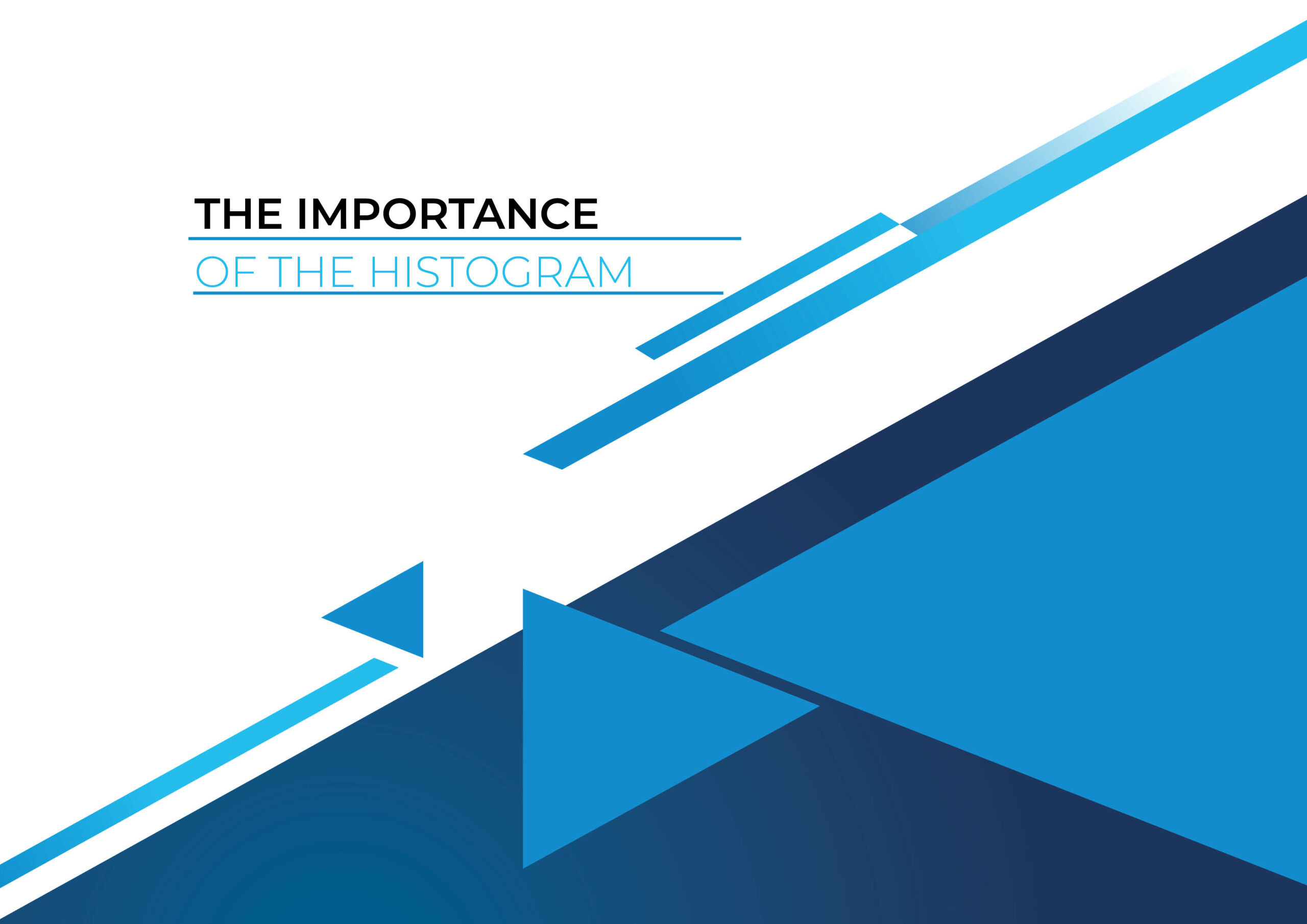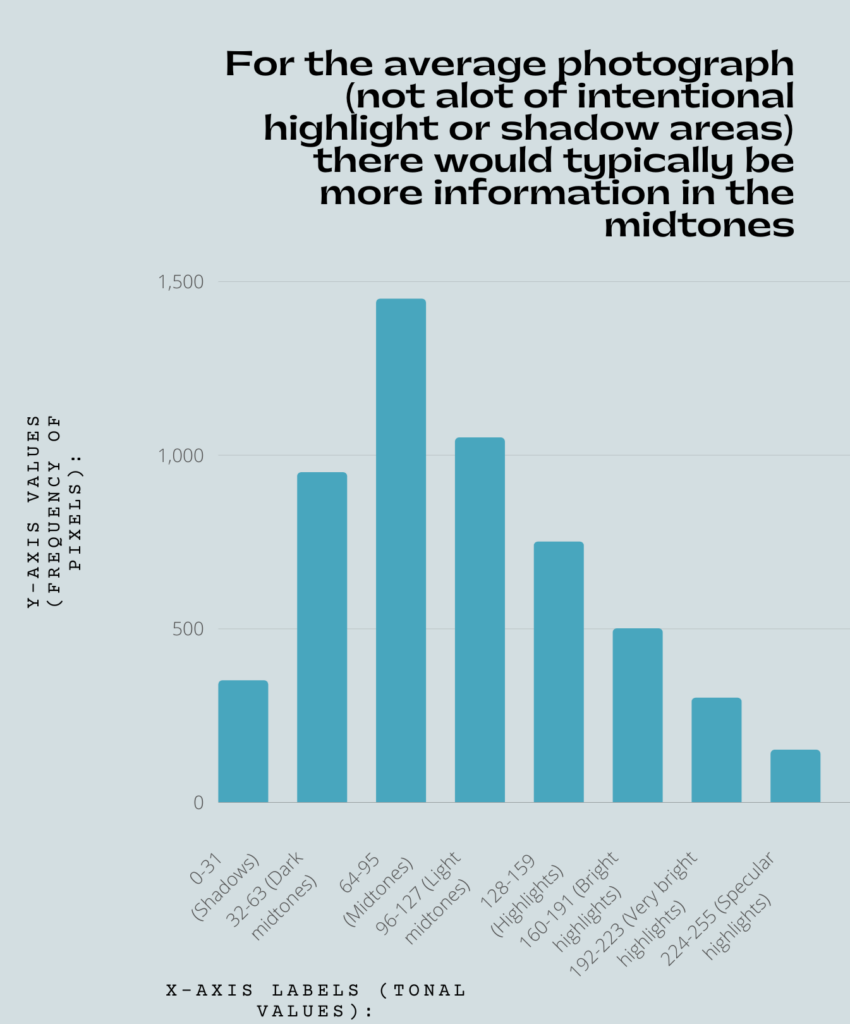Content Strategy

R1.2 Camera Settings: The Importance of the Histogram
Overview
In this module, students will learn the importance of the histogram in photography. The histogram serves as a critical tool for assessing image tonal values and adjusting exposure, particularly in challenging conditions. It aids in optimizing camera settings, understanding the camera’s dynamic range, and making informed post-processing decisions. The use of the histogram enhances the ability to accurately capture well-exposed images, preserving critical details even in complex scenes.
By The End of This Lesson Students Will Be Able To
- Understand the role and importance of the histogram as a visual tool for evaluating an image’s tonal values.
- Recognize the utility of the histogram in assessing and adjusting exposure, especially in challenging lighting conditions or high-contrast scenes.
- Leverage the histogram for making informed decisions on camera settings and post-processing adjustments to optimize the final image.
- Appreciate the histogram as an objective and reliable tool for exposure assessment, compensating for human eye and LCD screen limitations.
- Utilize the histogram to understand the dynamic range of the camera, working within its limitations to capture images requiring minimal post-processing.
- Use the histogram to identify ideal exposure for complex scenes, ensuring preservation of critical details.
- Emphasize the value of understanding and utilizing the histogram to enhance photography skills, improve exposure accuracy, and inform decision-making during shooting and post-processing.
Course Content

Camera Settings: The Importance of the Histogram
The histogram is an indispensable tool for photographers, as it offers a visual representation of an image’s tonal values, helping them assess and fine-tune exposure. This is particularly important in situations where the human eye may struggle to accurately evaluate exposure, such as in high-contrast scenes, challenging lighting conditions, or on bright, sunny days when the camera’s LCD screen is less visible.
By analyzing the histogram, photographers can make informed decisions about their camera settings and post-processing adjustments to optimize the final image. The histogram provides an objective and reliable assessment, compensating for the limitations of the human eye and the camera’s LCD screen when determining exposure.
The histogram also plays a vital role in understanding the dynamic range of the camera, enabling photographers to work within its limitations and capture images that require minimal post-processing. In addition, it assists in identifying the ideal exposure for complex scenes, ensuring that critical details are preserved.
In summary, the histogram serves as a valuable tool for photographers to quickly and accurately evaluate exposure, especially in situations where the human eye may struggle to provide an accurate assessment. By understanding and utilizing the histogram, photographers can enhance their ability to create well-exposed images and make more informed decisions during shooting and post-processing.

Cognitive Engagement Questions
- Assignment 1: Understanding the Histogram (Assignment #HISTO-001)Objective: To understand the role of the histogram and how it represents an image’s tonal values.
Task: Students should take a photograph and provide a screenshot of the histogram from their editing software. They should then write a brief explanation interpreting the histogram and how it reflects the tonal values in their image.
Email Subject: Assignment #HISTO-001: Understanding the Histogram
Assignment 2: Histogram and Exposure (Assignment #HISTO-002)
Objective: To recognize the utility of the histogram in assessing and adjusting exposure.
Task: Students must capture two photographs of the same scene – one with an exposure that they think is correct without checking the histogram, and the second after analyzing the histogram and making necessary adjustments. They should submit both images and their histograms, explaining how the histogram helped them to improve their exposure.
Email Subject: Assignment #HISTO-002: Histogram and Exposure
Assignment 3: Histogram and Post-processing (Assignment #HISTO-003)
Objective: To utilize the histogram for making informed decisions on post-processing adjustments.
Task: Students should choose a photograph and adjust it in a photo editing software. They should provide the original and adjusted image, along with their histograms, and explain how the histogram guided their post-processing decisions.
Email Subject: Assignment #HISTO-003: Histogram and Post-processing
In all assignments, students should email their results to clintonali@gmail.com for evaluation or constructive criticism. Students must ensure the appropriate assignment number and topic is used in the email subject line for easy identification and sorting.
© 2023 Karimah Clinton Academy. All rights reserved.
